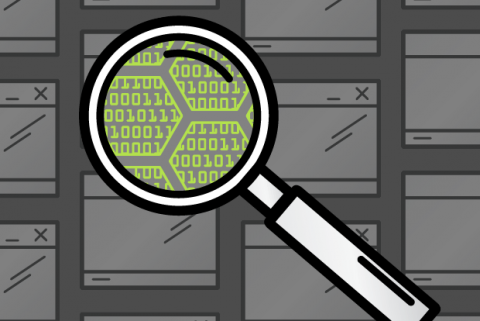Given its long history as a leader in technology, from the Wright Brothers at Kitty Hawk to Research Triangle Park, it should come as no surprise that the state of North Carolina’s IT group is also at the forefront of data analytics with an effort that has state agencies lining up to take advantage.
The NC Government Data Analytics Center (GDAC) has been in the works since the mid-2000s, working on criminal justice and some fraud and compliance efforts. Those proved fruitful enough that, shortly after Gov. Pat McCrory came into office in 2013, he moved the group to the state CIO’s office so it could take on a larger, state-wide role. In addition, John Correllus was promoted to Deputy State CIO and became the state’s first chief data officer.
The GDAC is all about integrating data from the various data sources that exist within state government and making better use of it. “We’re talking about how to transform data into information that facilitates better decision-making, increases operational efficiencies and improves outcomes for the state,” Correllus says. “It’s less about the technology behind it and more about how we set up a governance model and share data to support the business of government and work on business problems.”
Part of that means having a thorough process for deciding which problems to take on. “We first have to understand what the business problem is. Then we determine whether we have data that supports some type of analytics to inform and advise on that problem,” Correllus says. That simple process has been so successful that he says the group has yet to take on a problem where it couldn’t deliver some value in the end. “There’s been no wasted efforts that I’ve seen,” he says.
That’s saying a lot given the GDAC at any one time is working on a portfolio of about 25 projects. Typically, individual agencies come to the group with an issue they’d like help with, although the legislature and governor’s office have also been known to request help.
Keys to analytics success
Whatever the source, one of the keys to success is ensuring each project has a sponsor or owner who is engaged and committed to making effective use of the results of GDAC’s data analysis. “Otherwise there’s no value in producing analytics. You have to do something with it,” he says.
Much of the value that a centralized data analytics group like GDAC brings is the ability to hear about the problems many different agencies face and apply what works for one to others that have related issues. Fraud and compliance issues, for example, crop up in agencies that deal with work employment security, tax revenue and workers’ compensation insurance, among others.
“Once we start working on an effort, we can deploy it in other agencies much quicker,” Correllus says. “We’re not always starting something brand new, but extending capabilities we’ve already invested in. That’s the value; reusing what you’ve already implemented.”
Finding success in data analytics
GDAC success stories include an effort for the criminal justice system that integrates data on individuals from some 14 different sources. The idea is to provide a more complete picture for law enforcement officials when they are in the midst of an encounter of some sort, whether a traffic stop or domestic situation. While it’s difficult to put a figure on the savings the system delivers, “if a single life is saved because of that system, the value is priceless,” Correllus says.
Easier to define is the savings the state is seeing in its unemployment insurance program, which not long ago faced $3 billion in debt. The group worked with GDAC while also making changes to its rules and policies and eliminated the debt. GDAC has also supported the North Carolina Division of Employment Security in recovery of some $20 million from overpayments and compliance issues.
Another initiative just now getting underway is in health care. The GDAC now houses a Health Information Exchange through which Medicaid providers statewide securely pass clinical data back and forth. The idea is to use the data gleaned from the effort in order to better serve patients through better decision-making, which should lead to improved patient care.
“Millions of records pass throughout the system,” Correllus says, noting it will connect to more than 120 hospitals statewide. “The value of that is going to be enormous.”
Challenge: building a strong foundation
In terms of the biggest challenges to success with such ambitious efforts, he points to having sound “foundational pieces.” In many respects, the issue comes down to data standards, which will play into how well you can integrate data from different sources.
The same citizen may have different user IDs with different government agencies, for example. “How do you connect them together and get entity resolution so you can start using analytics?” Such efforts require extensive exploratory data analysis (EDA) so users can truly understand the data they’re working with and be able to document all attributes of it.
So Correllus’ advice to others embarking on enterprise data analytics efforts is simple: “Start small but think enterprise,” he says. “Pick something where you can see the value and cultivate it. And choose good business partners, not just IT partners – folks who understand what they’ll do with the results you produce. Focus on the business.”




